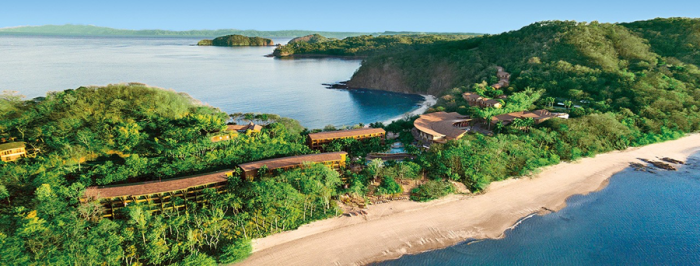Favorite guest lecture…
I enjoyed the guest lecture from Sherry A. Mariea on Women’s Rights and Equality. I thought it was interesting learning about the women’s role and everyday life in another country. More statistics were given and very powerful to show the discrimination that has been against women for years. The gender wage gap is 21.4% which hurts women. It sends the message that the work women do is not as valuable as men.
In India, it is dangerous to be pregnant with a baby girl. Not because of the child, but because of the dowries that the family and parents must pay (to the husband’s family) when she grows older and is married. India is a country that is very traditional, and while there are laws against dowries, they are still very common occurrences. Women pregnant with girls are often taken to get a highly illegal and unsafe abortion. It is mainly used by the rich due to the steep prices for the illegal practices. India is already seeing a decrease in women population. It has become increasingly difficult for men to marry due to the shortage of women. Families of the men are now not receiving dowries or anyone to continue the family name. It is very backfiring, because now the women should be in control but they aren’t shown that way. One would think a country with a woman as president would have more respect for women, especially after seeing what great potential they have. This gender discrimination causes 2 million girls to disappear each year, let alone the thousands if not millions of women who aren’t even born. Putting such a financial burden on families is continuing this terrible pattern.
She also talked about the issues of sex trafficking and slavery. The average age of girls who enter sex trafficking are around 12-14 years old. They are often lured by the promise of something as simple as attention or being able to buy nice things. The victims are treated poorly even in the legal system. They don’t hold the actual propitiator accountable in court. The make the women shoulder the blame of all of the terrible things that happened to them instead of the people creating the sex traffic.
I thought it was very interesting and rather odd that Sherry Mariea admitted she wasn’t a feminist. Being a feminist does not mean that one thinks females are better than everyone else. Instead, it asks for females to be treated equal to men. It asks for same pay, removable of glass ceilings, and fair treatment, which was exactly what the lecturer was asking for. There is a bad connotation around the world, which is terrible, because it makes women feel like there are unable to stand up for themselves. If they aren’t able to help themselves, how are they every going to be able to help others who need equality as well?
What I gained from researching Costa Rica…
Costa Rica is a beautiful country; I hope to one day visit. Through my research, I found out a lot more of the average Costa Rican’s life that doesn’t involve giving tours to their billion tourists each year. The average Costa Rican farms, sells handmade goods and fishes. I learned about the deforestation and how many groups are fighting against the major corporations to keep the air fresh, and the forests abundantly green. The natural forests is what makes the visitors flock to Costa Rica. They provide a beautiful paradise with a great climate.

The climate allows for a plentiful farming to provide a majority of the local’s jobs. The country is very self-sufficient with the number of crops it provides and is able to sell to the tourists. This creates a sustainable income. It is also something they must be careful not to take for granted, and take care on their ecosystem to make sure that it will be around and clean for years to come.
I learned a lot about the terrible effects that come along with the tourism industry. An increase in vacation human trafficking with taking or luring victims and finding buyers. Also, the impacts tourism has on the environment. Visitors using airplanes to travel all the way to Costa Rica from various starting points. It causes a big impact on the amount of air pollution. There is also a lot of gas being used to show them the island in helicopters, buses, and cars.
But visiting other countries isn’t all bad. It helps spread the understanding of other cultures, and works to create a more accepting society. Learning other cultures helps to clear up any misunderstandings about other cultures, especially by traveling and being submersed in the culture.
Bibliography
Costa Rica. (n.d.). In Four Seasons. Retrieved November 30, 2016, from


 Everyone has a responsibility and moral obligation to take care of the beautiful planet we live on. There is no back up location we can go, if/once Earth becomes an unlivable environment. We need to set aside any current issue, to focus on fixing this problem. It is more crucial than anything else, because it decides the fate of our future and if we even have a future. This is because if we don’t have land or fresh water, the entire human race will quickly dwindle if not diminish. People are losing their homes and land already because of the increasing temperatures, rising sea levels and floods.
Everyone has a responsibility and moral obligation to take care of the beautiful planet we live on. There is no back up location we can go, if/once Earth becomes an unlivable environment. We need to set aside any current issue, to focus on fixing this problem. It is more crucial than anything else, because it decides the fate of our future and if we even have a future. This is because if we don’t have land or fresh water, the entire human race will quickly dwindle if not diminish. People are losing their homes and land already because of the increasing temperatures, rising sea levels and floods.


 being first accepted into the United Nations. They joined on January 8th, 1946. Today there is 189 member countries working together to secure financial security around the world. The International Monetary Fund logo is put together with a shield, globe and olive branch. The shield symbolizes the secure financial stability of the member countries. The olive branch is for high employment and sustainable economic growth. The two sides of the globe are for all of the 189 countries who work together to make everything smoothly in the organization.
being first accepted into the United Nations. They joined on January 8th, 1946. Today there is 189 member countries working together to secure financial security around the world. The International Monetary Fund logo is put together with a shield, globe and olive branch. The shield symbolizes the secure financial stability of the member countries. The olive branch is for high employment and sustainable economic growth. The two sides of the globe are for all of the 189 countries who work together to make everything smoothly in the organization.